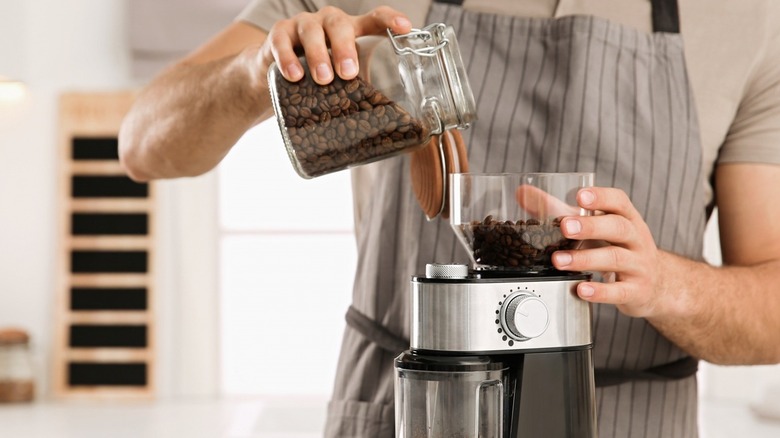Spritz Coffee Beans With Water Before Grinding To Keep Messes At Bay
Coffee has a revered place in many cultures and homes across the globe. For many, it's the morning ritual, the energy booster, and the drink that keeps conversations lively. However, grinding it at home often leaves us with messy countertops and coffee grounds scattered around, which can easily become a constant source of annoyance. So, what if there was a simple, fuss-free way to make this process less messy? Enter the technique of spritzing your coffee beans with a dash of water before grinding them.
This simple hack is popularly known as the Ross Droplet Technique. The method might sound counterintuitive at first. After all, water and coffee grounds don't typically mix until it's time to brew. But a light mist is all that's needed, not a drenching.
So, to apply the technique, add just a tiny bit of water to the beans (one to two spritzes), give the beans a little shake to distribute the moisture, then grind the beans as usual. You'll find that they grind more uniformly and produce fewer flyaways.
Why does this hack work?
Diving deeper into why this technique is so effective requires a closer understanding of the characteristics of coffee beans and the grinding process. For the uninitiated, the random scattering of coffee grounds around your grinder might seem like a mere byproduct of the grinding action. But there's a deeper scientific explanation for it: static electricity.
Static electricity is generated due to the friction between the coffee beans and the grinder's components, as well as between the beans themselves. As the beans shatter into thousands of tiny particles, they become charged. This causes them to repel from each other, leading to flyaway grounds that create the dreaded mess we're all too familiar with. And this is where spritzing the beans with water comes into play.
Water is a great conductor, and introducing even a tiny amount of moisture to the coffee beans can help dissipate the static charge. When the beans are lightly misted, the water molecules form a thin layer around each bean. As the beans are ground, and static begins to form, the water acts as a neutralizing agent, reducing the buildup of static electricity. Consequently, the coffee grounds are less likely to cling to the grinder's walls or fly out onto your countertop. So the next time you're about to grind coffee beans, give them a quick spritz and enjoy a noticeably tidier coffee preparation experience.

